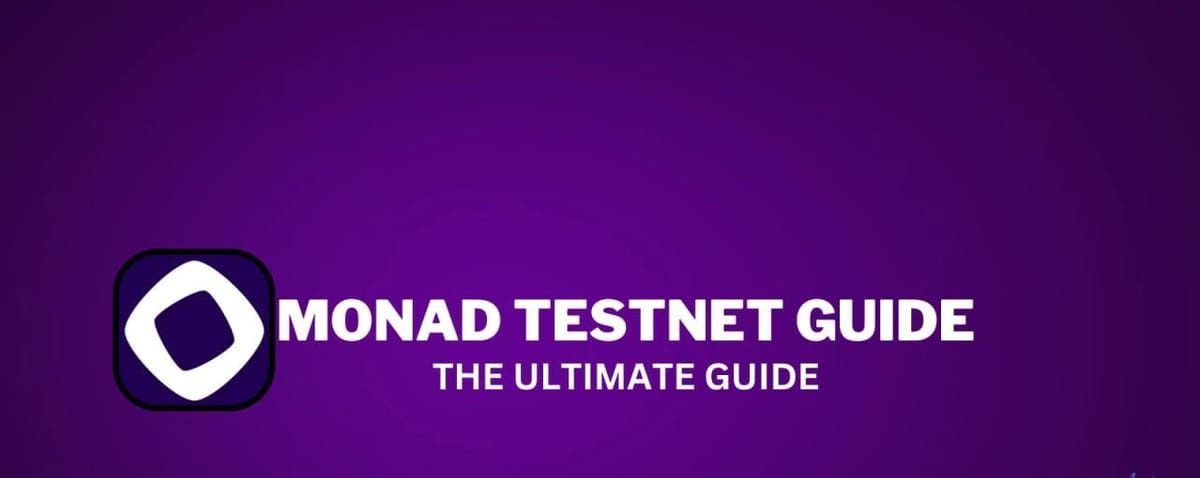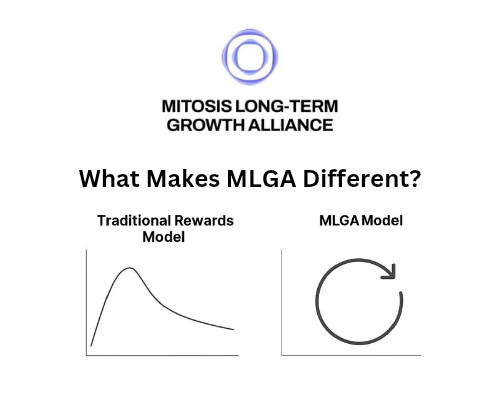Monad Testnet Analysis Guide: Exploring the Future of High-Performance Blockchain

The Monad Testnet, launched on February 19, 2025, represents a pivotal moment in the evolution of blockchain technology. As a high-performance, Ethereum Virtual Machine (EVM)-compatible Layer 1 blockchain, Monad aims to address the longstanding challenges of scalability, speed, and cost while maintaining decentralization and security. With its promise of processing up to 10,000 transactions per second (TPS), one-second block times, and transaction fees under a cent, Monad has garnered significant attention from developers, users, and investors alike. This comprehensive guide provides an in-depth analysis of the Monad Testnet, offering insights into its performance, features, ecosystem, and how to engage with it effectively.
Understanding Monad: The High-Performance EVM-Compatible Blockchain
Monad is designed to overcome the limitations of existing blockchain networks, particularly Ethereum, which struggles with scalability and high transaction costs. By rebuilding the Ethereum architecture from the ground up, Monad introduces several innovative features:
•Parallel Execution and Superscalar Pipelining: Unlike Ethereum’s single-threaded execution, Monad processes multiple transactions simultaneously, significantly increasing throughput. Superscalar pipelining optimizes transaction processing by breaking it into stages, allowing for faster and more efficient execution.
•Single-Slot Finality: Transactions on Monad are finalized within a single block, reducing latency and improving user experience compared to Ethereum’s multi-slot finality.
•Custom State Database and Consensus Mechanism: Monad’s bespoke database and consensus mechanism enhance performance while maintaining low hardware requirements, making it accessible for a wide range of validators.
•EVM Compatibility: Monad is 100% bytecode-compatible with Ethereum, meaning developers can seamlessly port existing Ethereum-based smart contracts, wallets, and tools without modification.
These features position Monad as a high-performance alternative to Ethereum, capable of supporting decentralized applications (dApps) with demanding throughput and latency requirements. The testnet phase, which began in early 2025, allows developers and users to experiment with these capabilities in a risk-free environment before the mainnet launch.
Monad Testnet: A Playground for Innovation
The Monad Testnet serves as a sandbox for developers, users, and protocols to explore the network’s capabilities. Since its launch, the testnet has demonstrated impressive performance metrics, providing valuable insights into Monad’s potential. According to official data, the testnet has:
•Processed nearly 2.7 million transactions across 242,300 unique addresses within weeks of launch.
•Achieved a peak TPS of 3,000 in the first few hours, with an average TPS of 26 in daily operations.
•Maintained a transaction success rate of 98%, showcasing network reliability.
•Generated blocks in an average of 0.5 seconds, making it one of the fastest blockchains currently available.
•Deployed over 110,300 smart contracts, with 5,000–6,000 new contracts added hourly.
These metrics highlight Monad’s ability to handle high transaction volumes while maintaining speed and stability, making it an ideal platform for testing scalable dApps.
Key Objectives of the Testnet
The Monad Testnet is designed to achieve several goals:
•Developer Experimentation: Provide a safe environment for developers to deploy and test smart contracts, dApps, and infrastructure.
•Community Engagement: Encourage users to interact with dApps, provide feedback, and build communities around Monad-based projects.
•Performance Validation: Stress-test the network’s scalability, speed, and reliability under real-world conditions.
•Ecosystem Growth: Foster the development of a vibrant ecosystem by integrating with wallets, decentralized exchanges (DEXs), NFT platforms, and other protocols.
By participating in the testnet, users and developers can gain early access to Monad’s features, contribute to its refinement, and potentially position themselves for future rewards, such as a speculated token airdrop.
Getting Started with the Monad Testnet
Engaging with the Monad Testnet is straightforward, thanks to its user-friendly onboarding process and native integrations with popular wallets and tools. Below is a step-by-step guide to analyzing and interacting with the testnet.
Step 1: Set Up a Compatible Wallet
To interact with the Monad Testnet, you’ll need an EVM-compatible wallet. Recommended wallets include:
•Phantom Wallet: Offers native support for Monad Testnet, automatically adding the network upon connection.
•MetaMask: Requires manual configuration of the Monad Testnet network.
•OKX Wallet, Uniswap Wallet, Rabby Wallet, or Backpack: These wallets also support Monad with varying degrees of automation.
To add the Monad Testnet to MetaMask manually:
- Visit testnet.monad.xyz.
- Click “Manually add network” and select “Add Testnet to MetaMask.”
- Approve the connection in MetaMask.
- Input the following network details if prompted:
•Network Name: Monad Testnet
•RPC URL: Available on the testnet page
•Chain ID: Check testnet.monad.xyz or chainlist.org
•Currency Symbol: MON
•Block Explorer URL: testnet.monadexplorer.com
Step 2: Claim Testnet Tokens
Testnet tokens (MON) are required to perform transactions on the Monad Testnet. These tokens have no real-world value and are used solely for testing. To claim MON tokens:
•Navigate to the faucet on testnet.monad.xyz.
•Connect your wallet and copy your EVM-compatible wallet address.
•Paste the address into the faucet and click “Get Testnet MON.”
•Tokens are distributed based on eligibility:
•5 MON: Users with a “Full Access” role in the Monad Discord.
•2 MON: Wallets with at least 0.01 ETH and an outgoing transaction on Ethereum Mainnet.
•0.05 MON: All other users.
•Note that faucet requests are limited to once every 12 hours due to high demand.
Alternative faucets, such as those provided by QuickNode, Gas.zip, or Owlto, may also be available but can experience delays during peak usage.
Step 3: Explore the Ecosystem
The Monad Testnet hosts a growing ecosystem of dApps, offering diverse opportunities for interaction. Key platforms include:
•Uniswap: Users can swap tokens and provide liquidity on the Monad Testnet via the Uniswap wallet or web app. Enable “Testnet mode” in the settings to access Monad-specific features.
•Magic Eden: A marketplace for minting, buying, and trading NFTs, such as Monad Penguins and MonSharks. Limited-edition drops and campaigns may offer exclusive perks.
•Curvance: A DeFi platform where users can stake, borrow, lend, and earn “Bytes” (testnet points) for participation.
•Fantasy Top: A gamified social-fi dApp where users draft NFT “players” (crypto influencers) and compete based on their X engagement.
•Kintsu: A staking platform for testnet MON tokens, simulating liquid staking workflows.
•NAD.fun: Allows users to create custom tokens and complete tasks for rewards.
•Opinion Labs: A prediction market platform for betting on events using testnet tokens.
To maximize engagement, explore the https://monad.xyz/ for a curated list of apps and infrastructure. Interacting with multiple dApps increases on-chain activity, which may be relevant for potential airdrop eligibility.
Step 4: Analyze Network Performance
For developers and analysts, tools like (https://testnet.monadexplorer.com/ )and (https://community.dune.com/ )provide insights into the testnet’s performance. Key metrics to monitor include:
•Transaction Success Rate: Currently at 98%, indicating high reliability.
•Block Time: Averaging 0.5 seconds, enabling near-instant transaction confirmations.
•TPS: Peaks at 3,000 TPS, with daily averages around 26 TPS.
•Smart Contract Deployment: Over 110,300 contracts deployed, reflecting robust developer activity.
Use these tools to track transactions, visualize data, and assess the network’s scalability under varying loads.
Step 5: Contribute Feedback
The Monad Testnet is an evolving platform, and user feedback is critical for its refinement. Join the Monad Discord or developer portal to share insights, report bugs, and connect with the community. Engaging with app teams and participating in hackathons, such as Monad Madness, can further amplify your impact.
Analyzing the Monad Testnet: Strengths and Opportunities
Strengths
•Unparalleled Performance: The testnet’s ability to process 3,000 TPS at peak and maintain 0.5-second block times sets a new standard for Layer 1 blockchains.
•EVM Compatibility: Seamless integration with Ethereum tools reduces the learning curve for developers and accelerates ecosystem growth.
•Vibrant Ecosystem: Over 100 projects, including DeFi, NFTs, and gaming dApps, demonstrate Monad’s versatility.
•Community Engagement: Distribution of testnet tokens to 8.8 million Ethereum addresses has driven significant user adoption, with 3% of recipients completing transactions within 24 hours of launch.
•Low Barriers to Entry: Minimal hardware requirements and low transaction fees make Monad accessible to a broad audience.
Opportunities
•Airdrop Potential: Many in the crypto community speculate that active testnet participants may be eligible for a future token airdrop, incentivizing early engagement.
•Developer Incentives: Programs like Monad Madness, with $1M in prizes and $60M in potential investments, attract top talent to the ecosystem.
•Scalability Testing: The testnet provides a unique opportunity to validate dApps under high-throughput conditions, preparing them for mainnet deployment.
•Cross-Chain Integration: Partnerships with platforms like Wormhole and Owlto suggest future bridging capabilities, enhancing Monad’s interoperability.
Challenges
•Faucet Congestion: High demand for testnet tokens has led to delays, with some faucets taking up to three hours to process requests.
•Security Risks: Users must exercise caution when interacting with third-party dApps and avoid connecting wallets to malicious links.
•Evolving Ecosystem: The testnet is still in its early stages, and some features or dApps may undergo significant changes before mainnet launch.
Best Practices for Testnet Participation
To make the most of the Monad Testnet, consider the following tips:
•Use a Fresh Wallet: Create a dedicated wallet for testnet activities to minimize security risks. Avoid using wallets connected to mainnet assets.
•Diversify Interactions: Engage with multiple dApps (e.g., Uniswap, Magic Eden, Curvance) to maximize on-chain activity and explore the ecosystem’s breadth.
•Monitor Official Channels: Follow Monad’s X account (https://x.com/monad_xyz?t=4KRILPVHDhiehWzglCPUmQ&s=09) and Discord for updates on new dApps, campaigns, and potential airdrop announcements.
•Practice Due Diligence: Verify the legitimacy of dApps and faucets before connecting your wallet. Stick to official links provided by https://monad.xyz/.
•Document Your Activity: Keep track of your transactions and interactions, as they may be relevant for future rewards or developer contributions.
Conclusion: Why the Monad Testnet Matters
The Monad Testnet is more than just a testing ground—it’s a glimpse into the future of blockchain technology. By combining Ethereum’s developer-friendly environment with unparalleled performance, Monad is poised to redefine how decentralized applications operate. Its testnet phase offers a unique opportunity for developers to build scalable dApps, for users to explore innovative platforms, and for the community to shape a high-performance blockchain ecosystem.
Since its launch, the Monad Testnet has demonstrated remarkable stability and scalability, processing millions of transactions and deploying thousands of smart contracts with near-perfect success rates. As the ecosystem grows and the mainnet launch approaches, early participants stand to benefit from their contributions, whether through technical insights, community engagement, or potential token rewards.
To get started, visit https://testnet.monad.xyz/, claim your testnet tokens, and dive into the ecosystem. Whether you’re a developer, trader, or crypto enthusiast, the Monad Testnet is your chance to be part of a transformative moment in blockchain history. Stay curious, stay secure, and start exploring today.
References
•Monad Testnet Onboarding Guide: https://www.monad.xyz/post/monad-testnet-onboarding-guide
•Data Analysis: How has the Monad testnet performed since its launch?: https://followin.io/en/feed/16485389
•Monad Testnet: The Ultimate Developer Guide (2025):https://www.quillaudits.com/blog/blockchain/monad-testnet
•Guide to Interacting with the Monad Testnet for a Potential Airdrop: https://www.coingecko.com/learn/monad-potential-crypto-airdrop
•Monad Testnet is Now Live on Uniswap:https://blog.uniswap.org/monad-testnet
•Mitosis Blog - https://blog.mitosis.org/
•Mitosis official website - https://mitosis.org/
•Mitosis university - https://university.mitosis.org/

Comments ()